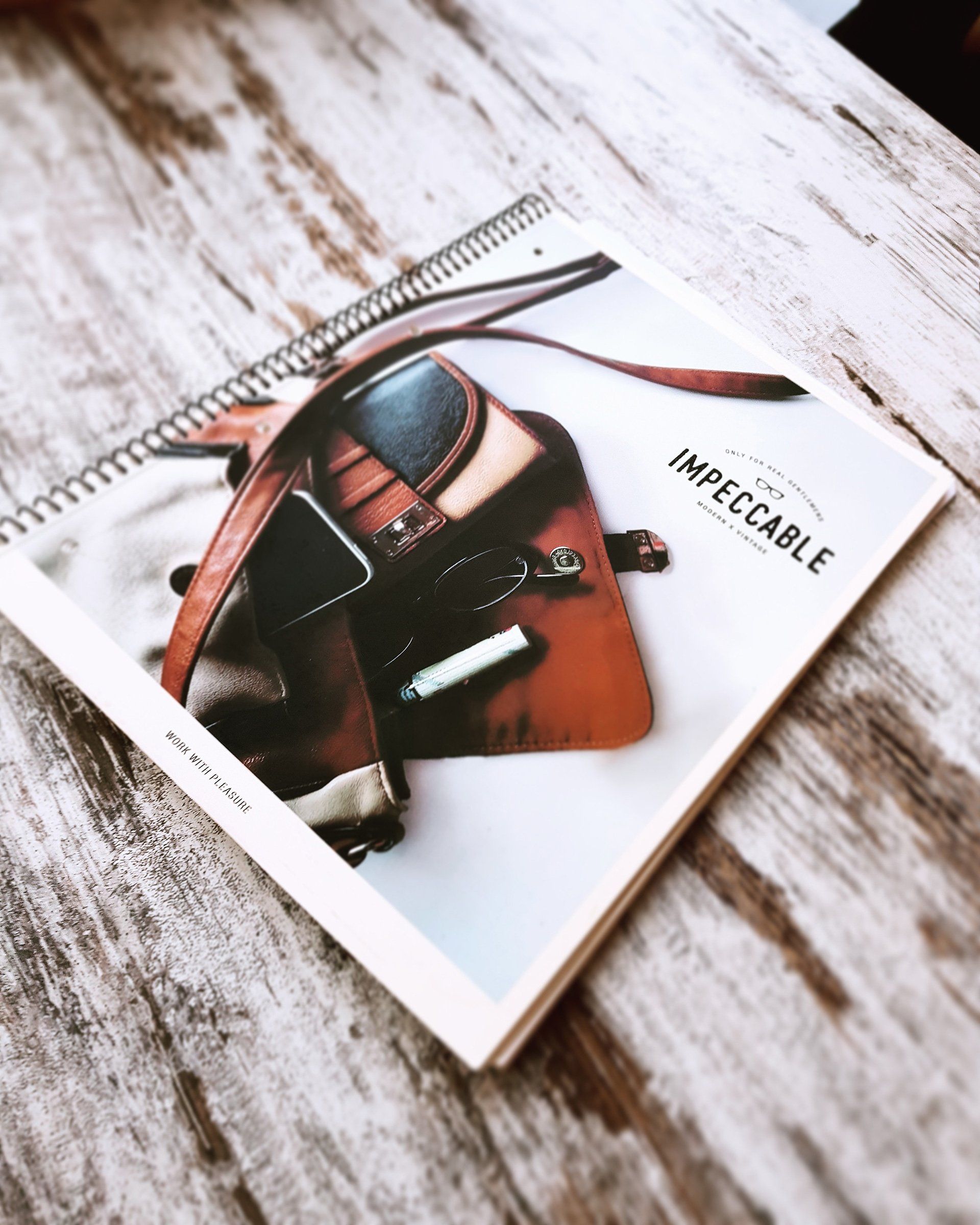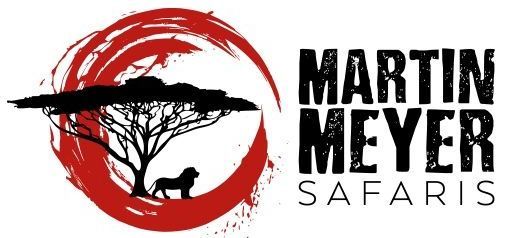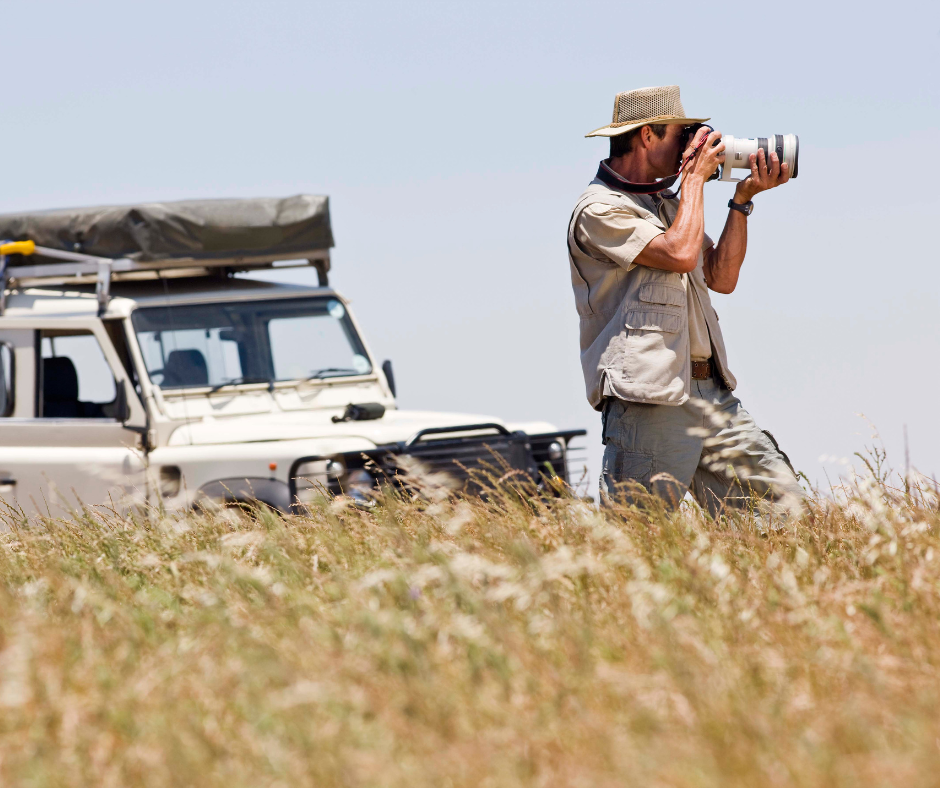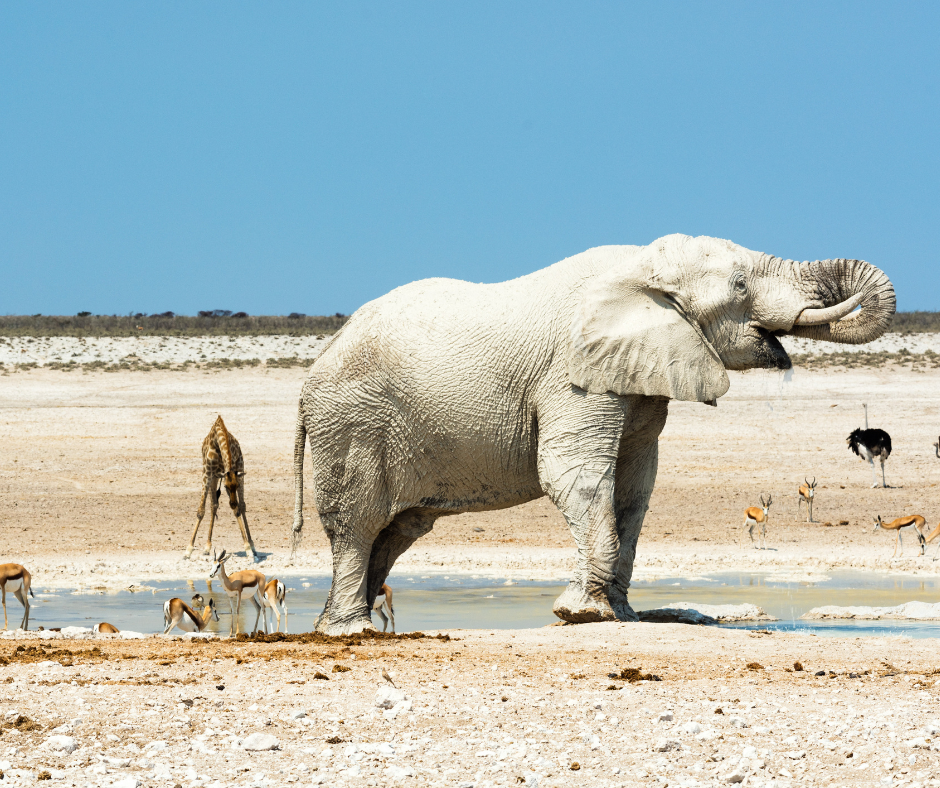Collaring Hyenas to Fight Snares: The Unexpected Allies of Conservation
The Silent Crisis of Snares
Across Africa’s wild landscapes, wire snares are one of the deadliest threats to wildlife. Cheap to make, easy to set, and nearly invisible in the bush, snares catch anything that crosses their path. From antelope to leopards, wild dogs to hyenas, these traps kill indiscriminately—and often slowly.
Conservationists are constantly searching for smarter ways to detect and dismantle snares before they claim more lives. Increasingly, the answer lies not only in ranger patrols or technology, but in the animals themselves—especially the spotted hyena.
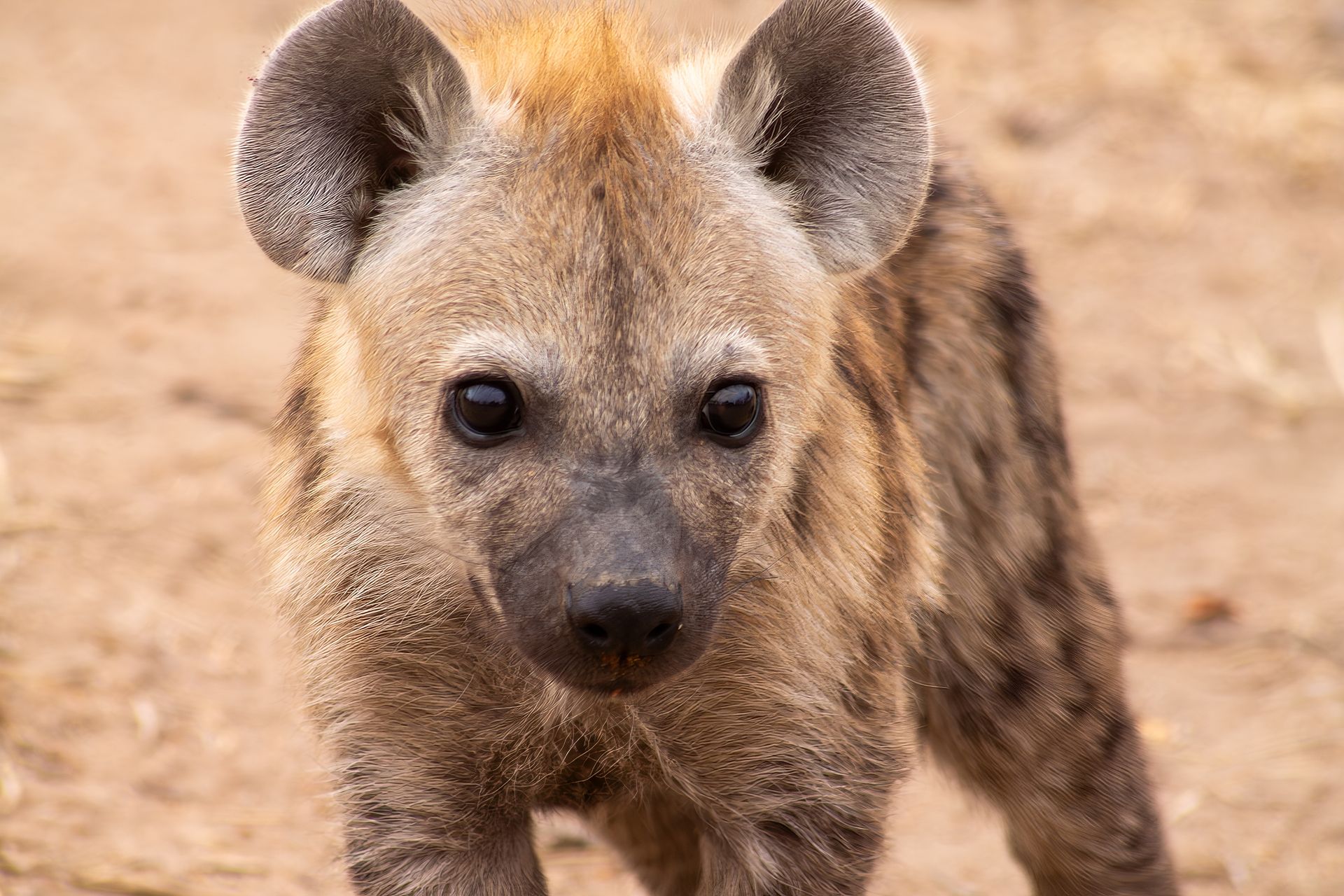
5 Key Takeaways
- Hyenas act as Bio-Sentinels:
Collared hyenas act as living detectors of poaching pressure, signaling the presence of snares through changes in their movement and behavior. - Science-Backed Results:
In pilot studies, just five collared hyenas led rangers to 78 suspected snare sites, enabling the removal of over 40 active snares and reducing hyena mortality by more than 60%. - Ecosystem-Wide Protection:
Snare removal doesn’t just save hyenas—it shields lions, leopards, wild dogs, and prey species, restoring balance to entire ecosystems. - From Reactive to Proactive:
GPS collaring transforms anti-poaching patrols from random sweeps into precise, data-driven interventions, making every ranger hour more effective. - Conservation Meets Safari:
Through Martin Meyer Safaris’ Conservation Safaris, guests don’t just witness the science—they participate in it, safely and ethically contributing to a legacy of protection that lasts long after their safari ends.
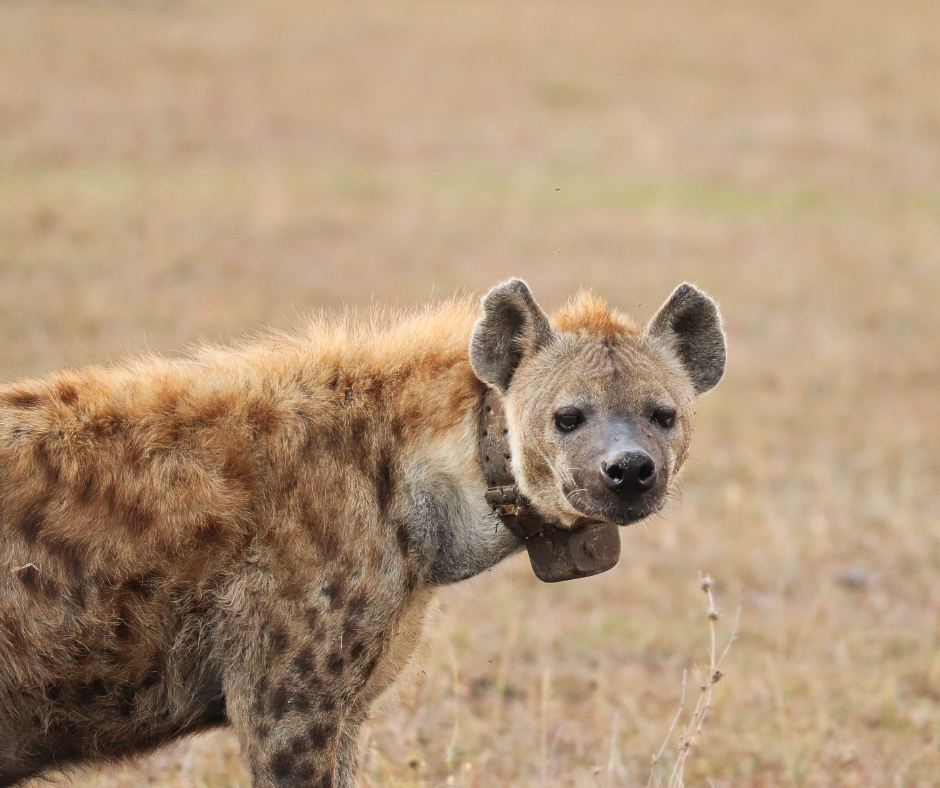
Why Hyenas Hold the Key
Hyenas have long been misunderstood as scavengers on the margins of the ecosystem. In reality, they are intelligent, adaptable predators with traits that make them perfect allies in conservation science.
- Wide-ranging movement: Hyena clans can roam 30–50 km in a single night, often crossing reserve boundaries and venturing into areas where snares are most likely to be set.
- Acute senses: Their extraordinary sense of smell allows them to detect unnatural scents and disturbances, including the presence of metal snares or human activity.
- Behavioral signals: When hyenas encounter snares, their movement patterns change—slowing, detouring, or clustering. Collars record these subtle changes, providing researchers with indirect but reliable indicators of poaching hotspots.
- Survival resilience: Hyenas are adaptable enough to thrive in human-pressured landscapes, but this also puts them at higher risk of snaring—making them both victims and vital informants.
In effect, collared hyenas become bio-sentinels: living, moving detectors of poaching pressure across the landscape.
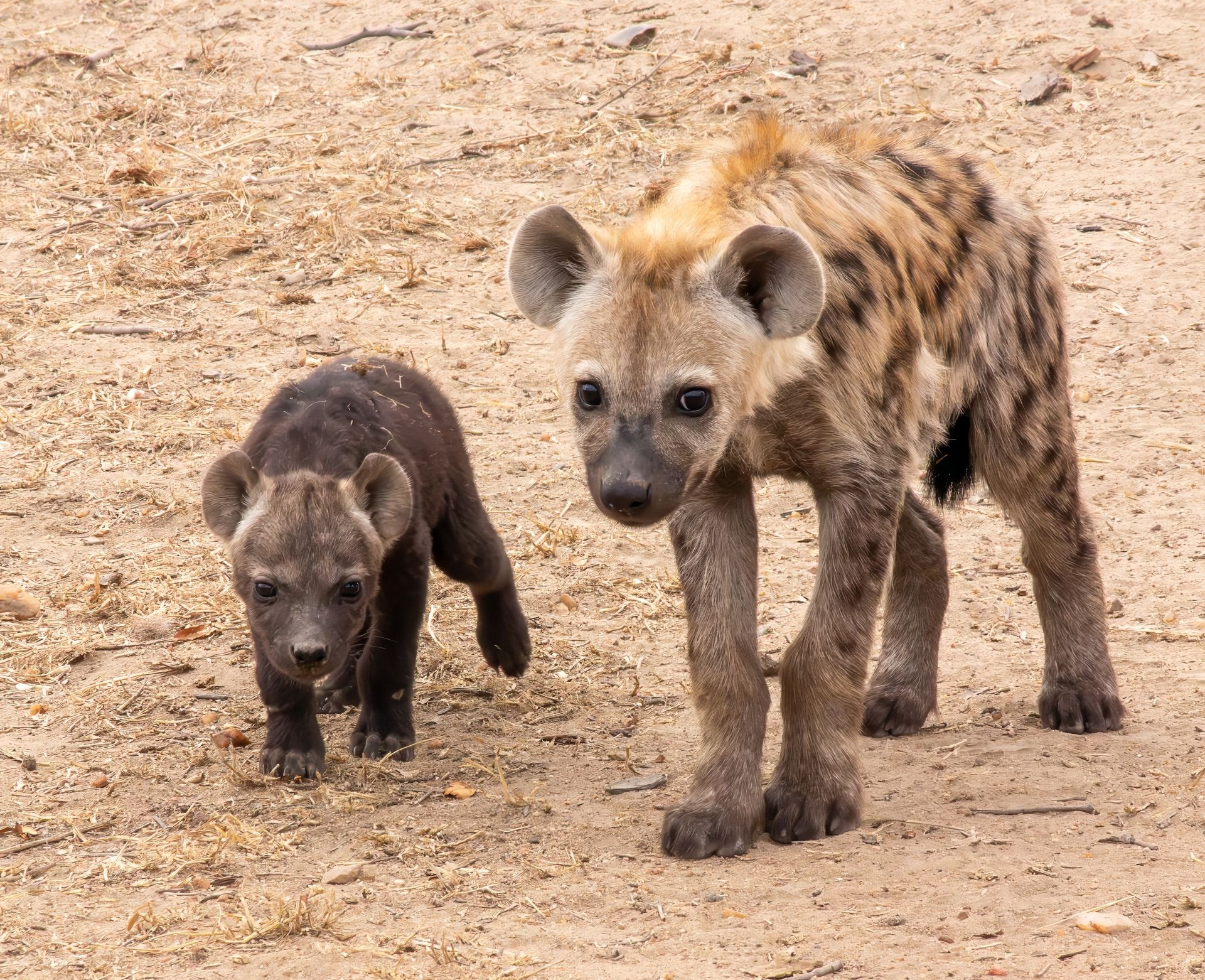
The Science in Action
Field trials across East and Southern Africa have already shown how powerful hyena collaring can be as a conservation strategy. What might look like a small pilot project has in fact produced results that are shaping the way rangers and ecologists think about anti-poaching patrols.
Case Study: Collared Hyenas as Snare Scouts
In one reserve, just five collared hyenas were enough to create a detailed map of poaching pressure. Over a period of three months, their GPS movement data revealed 78 locations of interest—areas where the animals slowed down, detoured suddenly, or clustered in unusual ways.
When ranger patrols checked these locations on the ground, they found more than 40 active snares hidden along game trails, in thickets, and near waterholes. Each snare removed represented more than just a wire pulled from the bush—it meant a zebra spared from strangulation, a leopard free to hunt another day, a hyena clan able to roam without losing members to unnecessary suffering.
Ripple Effects Across the Ecosystem
The benefits didn’t stop with the hyenas. By reducing snaring pressure, the entire predator-prey balance shifted toward stability:
Wild dogs—highly vulnerable to snares due to their ranging habits—saw fewer casualties.
Lions and leopards, often caught while scavenging snared prey, were less likely to suffer injuries or fatalities.
Prey species like kudu, bushbuck, and impala gained relief from relentless snare lines, leading to healthier populations and more natural predator-prey dynamics.
In other words, collaring a handful of hyenas protected dozens of species across the reserve.
Measurable Success: A 60% Drop in Hyena Mortality
The numbers speak for themselves. Within the study period, mortality rates for hyenas in the test area dropped by over 60% compared to previous years. Fewer snare deaths meant more stable clan structures, more resilient predator guilds, and stronger ecological function.
This wasn’t just anecdotal success—it was statistically significant, showing that even small-scale collaring projects can create measurable, large-scale impact.
From Reactive to Proactive Protection
Traditionally, anti-poaching patrols are reactive—rangers walk or drive transects, hoping to stumble upon snares before it’s too late. The efficiency of this method is low, and reserves often lack the manpower to cover vast areas daily.
Hyena collaring flips the model to proactive conservation. Instead of patrolling blind, rangers are guided by real-time movement data. They know where to go, when to go, and what to look for—making each patrol significantly more efficient and impactful.
This is the revolutionary shift: wildlife itself is now helping to defend wildlife. Hyenas are not just surviving—they are actively informing the strategies that keep ecosystems alive.
Conservation Safaris: Guests as Active Partners
At Martin Meyer Safaris, we believe a safari should be more than a window into the wild—it should be a doorway into its protection. That’s why we created Conservation Safaris: journeys where guests step beyond the role of observer and become active contributors to real-world wildlife protection.
Instead of simply driving past predators on the plains, you become part of the science that safeguards them. Hyena collaring is one of the most dynamic examples of this philosophy in action.
What Guests Experience
1. Observing Collaring Operations
Under the careful guidance of wildlife veterinarians and researchers, guests witness hyena collaring firsthand. You’ll watch the precision and professionalism of the operation—sedation, collar fitting, health checks, and safe release—while learning exactly how the collar will function in the fight against snares.
2. Telemetry Tracking
Once collars are deployed, guests are given handheld telemetry receivers to locate collared hyenas in the field. It’s a chance to learn the same techniques that scientists use daily—listening for radio signals, triangulating locations, and plotting movement across the landscape.
3. Conservation Conversations
Around firesides and briefing tables, guests engage directly with rangers, ecologists, and anti-poaching teams. You’ll learn how GPS data translates into targeted patrols, how behavioral patterns hint at snare activity, and how collaring fits into the bigger conservation picture.
4. Witnessing Impact in Real Time
Perhaps most rewarding, guests see the link between collaring data and action. Movement alerts shared with ranger units can lead to the discovery of active snares within days. You leave not just with memories, but with the knowledge that your presence contributed to immediate, measurable results.
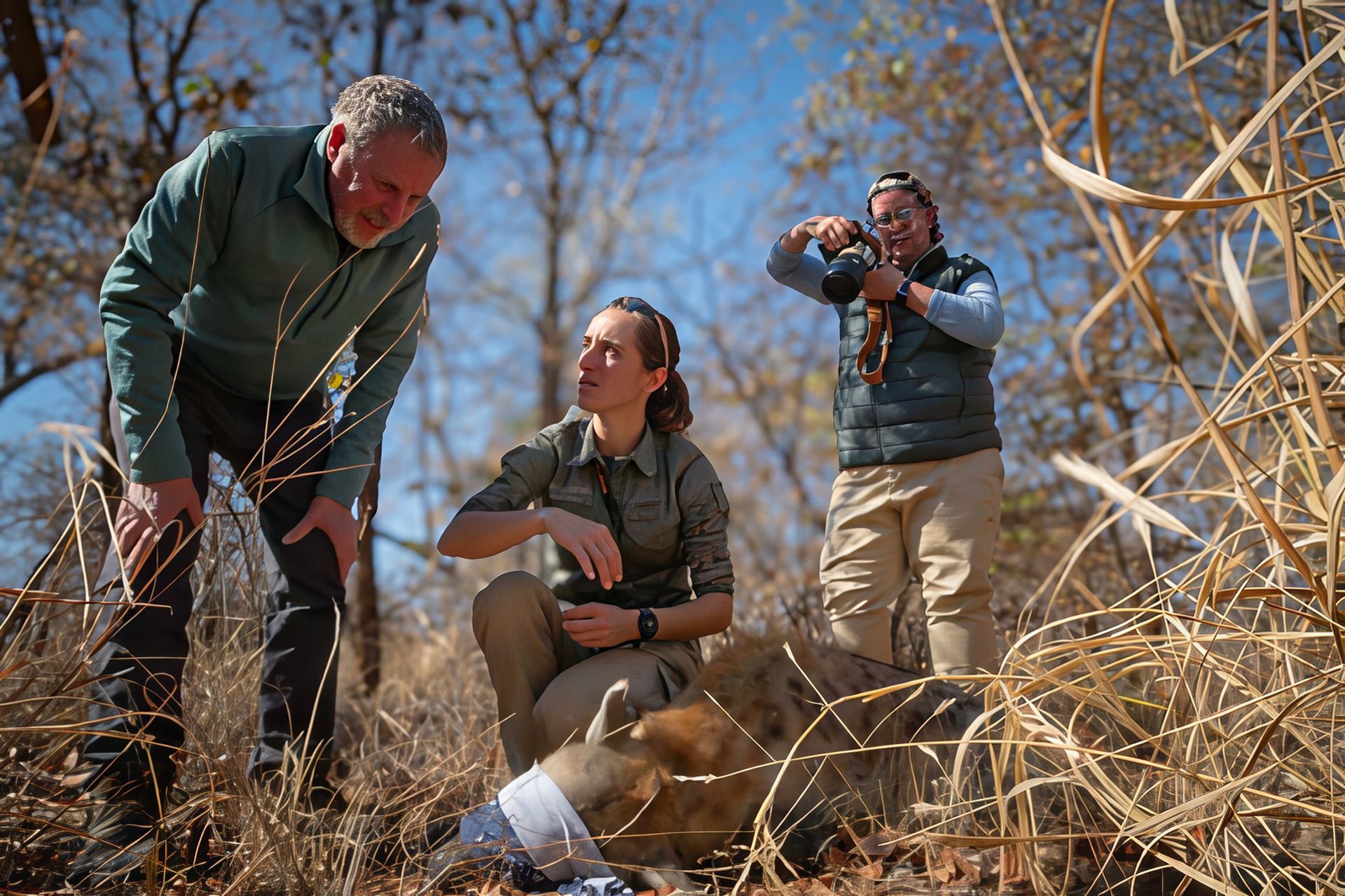
Ethics and Safety
Every conservation activity is built on three pillars: animal welfare, guest safety, and scientific integrity.
- Veterinarian-Led: Only licensed wildlife vets handle sedation and collaring. Once deemed safe by the Vet Team, guests are invited to view the animal up close while the team fits the collar, the vets answer any questions you may have and give you greater insight into the hyena.
- Strict Protocols: Animals are immobilized for the minimum time necessary, with careful monitoring to reduce stress.
- Supervised Participation: Guests observe and assist only from secure, designated areas, guided by conservation staff at all times.
- Transparency: Before and after each operation, experts provide full briefings so guests understand the purpose, risks, and safeguards behind every step.
This is not “voluntourism” or staged wildlife interaction. It is authentic conservation science, shared openly with those who want their safari to matter.
Why It Matters
By integrating collaring into Conservation Safaris, Martin Meyer Safaris ensures that guest travel dollars do more than fund luxury lodges—they directly:
- Pay for veterinary hours and collaring equipment
- Cover ranger patrol costs and fuel for anti-poaching units
- Support data analysis that guides future protection strategies
- Build awareness and advocacy among travelers who return home as ambassadors for African wildlife
The impact stretches far beyond the safari itself. Guests leave knowing their participation had tangible conservation outcomes—whether that’s snares removed, animals saved, or ecosystems safeguarded.
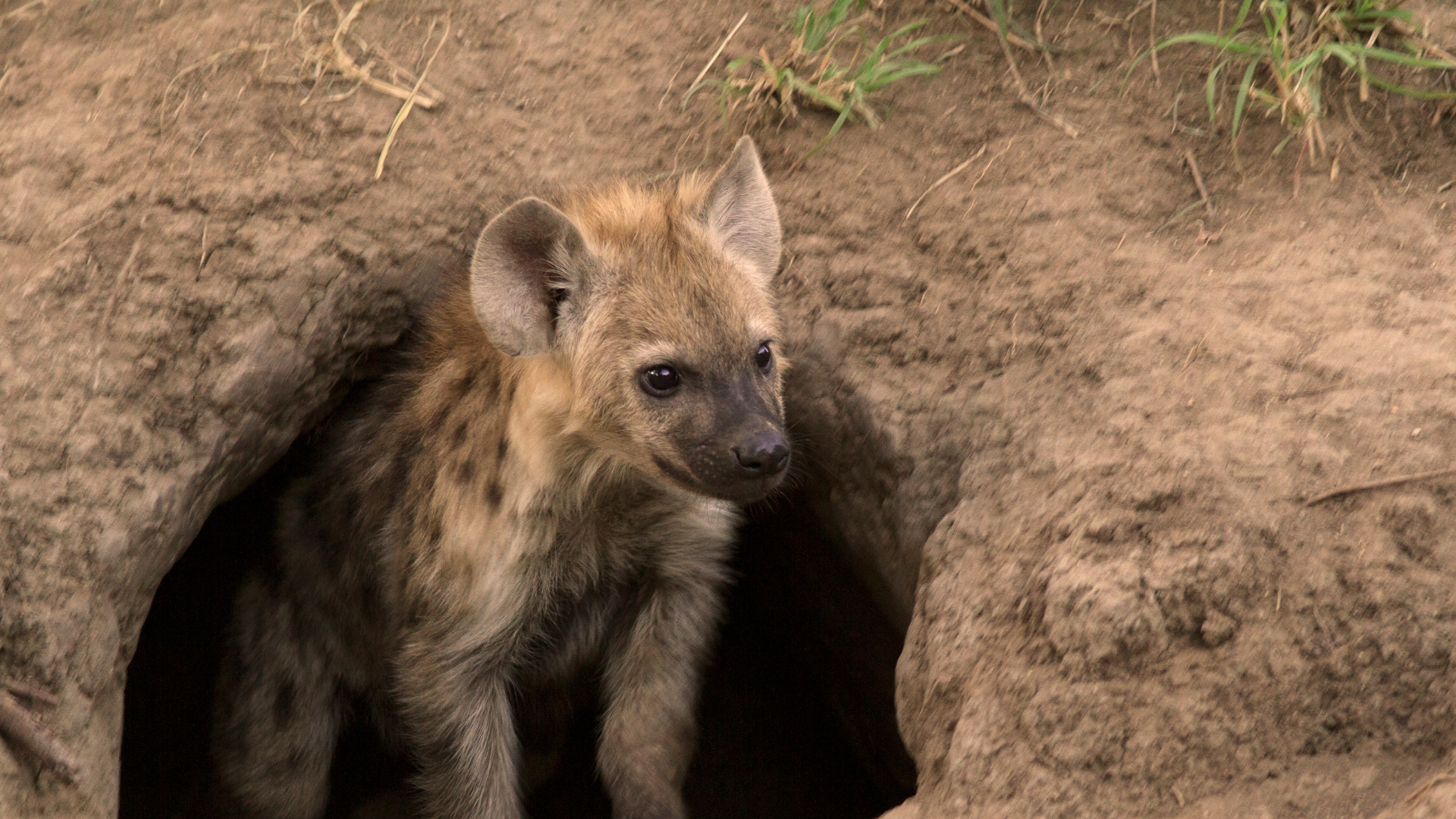
Beyond Sightings: Safaris with Purpose
For Martin Meyer Safaris, the mission is to create safaris that go beyond the traditional “Big Five” checklist. Conservation Safaris weave in active guest participation, ensuring travelers leave not just with photographs but with a genuine legacy of impact.
Collaring hyenas is at the heart of this. It transforms a misunderstood predator into a conservation partner, protects entire ecosystems from the silent killers of snares, and gives guests a chance to become part of the story.
Hyenas are rewriting their own narrative. Once maligned as scavengers, they are now proving to be indispensable allies in protecting Africa’s wildlife. By collaring them, researchers and rangers gain vital intelligence in the fight against snares.
And with Martin Meyer Safaris, travelers become more than spectators—they become active contributors to the survival of Africa’s wild heritage.
Because the best safari isn’t just about what you see. It’s about what you help save.
Book a complimentary safari consultation call now to secure your seat on the next conservation safari
Have you always dreamed of going on safari but don't know where to start ?
We offer a complimentary 1 hour safari consultation call to simplify the process.

